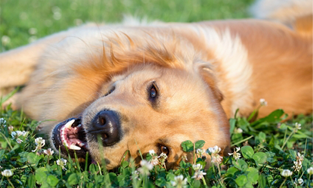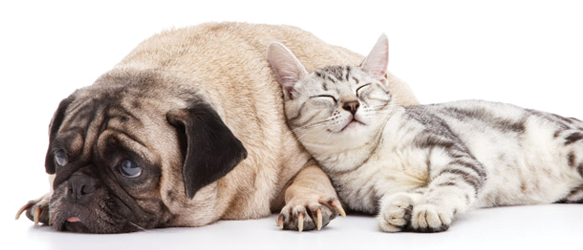4 activities that make your cat tick? 
11th April 2015
Here at PetStayAdvisor, we are all about helping you find that happy and relaxing haven for your pets, to rest their weary heads. So, with adult domestic cats sleeping between 16-20 hours a day, and kittens and the elderly kitty sleeping even longer, we thought we would find out the reasons why, and what they actually do for the remaining 15% of their day, phew!
1. No 1 ‘activity’ of your cat’s day
I am sure that this will come as no surprise to you that sleeping is the number one ‘activity’ for your cat? If you are reading this then you are probably a cat owner and cat lover, or at least have been a cat owner in the past. In fact, cats are known to be one of the highest sleepers in the animal kingdom. This is due to them still being in touch with their primal instincts to exert their energy in short, fast bursts to chase down their prey, only to later rest in order to preserve their energy for their next catch of the day. Julia Layton from Animal Planet, also believes that a diet packed full of protein may contribute to a cats need for sleep, providing rich protein packed energy in one go. Cats in the wild have never had to graze or constantly forage for their food as, for example, herbivores do, and have therefore never evolved in that way into our domesticated species. More of Julia Layton’s article on the subject can be found here, http://www.care2.com/greenliving/how-much-do-cats-sleep.html
So, with so much sleeping to do it’s always a great idea to find a trusted pet sitter or cat boarding facility, where you know your cat will have a great night….and day’s sleep, when you have to go away.
2. No 2 activity is playing
Just like their wild ancestors, cats instincts still require them to hunt and chase. That is why interacting and playing with your cat in his or hers short time awake, is a very powerful way of building trust, stimulating your cat mentally and physically, and providing an outlet for your cats pent up energy from all that sleeping. If you think that leaving some toys around the house may be enough, essentially, they are just simulating ‘dead prey’. This is why interacting with your cat by getting them to chase or catch moving objects, is by far, much better enrichment for your furry friend.
You can read more about the importance of interactive play here http://www.catbehaviorassociates.com/interactive-play-therapy/
3. Scratching your favourite lounge suite
Pam Johnson-Bennett,IAABC-Certified Animal Behaviour Consultant, states that scratching is such a complex and important behaviour for cats as it serves as a visual marker, vital for survival in the wild. A wild cat will use his claws to scratch on a tree to mark territory. This mark can then be seen at a distance and that keeps ensure that opponents of their territory stay away. Also, when a cat scratches he releases scent chemicals from glands located in his paw pads. This way, he is leaving both a visual and olfactory mark. Scratching is also a vital way cats stretch their back and shoulder muscles. In fact there are many reasons for why a cat scratches, as it also removes the dead outer sheath of the nail to keeps his nails in good condition. It also serves as an emotional outlet for cats. When a cat is very happy or anxious or unsure, he often goes to the scratching post as a displacement behaviour.
Due to the importance of scratching posts, it's crucial that when choosing one, you pick the appropriate type. Too often, people pick fluffy carpet-covered posts and cats don't like those kinds. Choose a sisal-covered post or one with a rough texture. You can read more about the importance of scratching in Pam Johnson’s article http://www.catchannel.com/experts/pam_johnson_bennet/article_pamjb0017.aspx
4. Eating, sometimes gourmet…Food
This subject could actually be an article in itself due to its complexity of how much, how often, and what mistakes most of us pet lovers can make when making food choices for our cats. But here are a few recommendations us cat owners can ‘chew’ over.
According to the Animal Medical Centre in New York, a healthy 3-4 kg cat (8lbs), requires 30 calories per pound per day, so that’s around 240 calories. It is recommended to limit feeds to twice a day, as opposed to free choice feeding, as this ‘free’ method is one of the top contributors to feline obesity today. But whether your cat is on dry, wet or a combination of these foods, there should always be a plentiful supply of clean drinking water close to hand. If you cat is solely on a dry diet then, according to www.catster.com, you will need to encourage your cat to drink a lot more water than if they were on just wet food. You can read more on this subject here: http://www.catster.com/cat-food/how-much-should-i-feed-my-cat
Well I don’t know about you, but all this talk about ‘activity’ in points 2-4 has made us downright exhausted!
So we would just like to add a final word to say that if by reading this article, you now have a clearer idea of what your cat gets up (or down) to in a day, we hope that whilst you are away, you can find that perfect place for you cat to stay, a home away from home perhaps?
So on that sleepy note, Good night all (or should that be good day!) and hope to see you back here next week…

10 important questions to ask before boarding your pet
Going away on holiday can be an exciting time for us pet owners, yet how can you be sure that your companions stay will be as happy and relaxing as your own, whilst you are away? Leaving your pet with knowledgeable and experienced pet boarding operators can be achieved by knowing the right questions to ask.
Read more

 *Fully tax deductible, 30 day money back guarantee
*Fully tax deductible, 30 day money back guarantee



